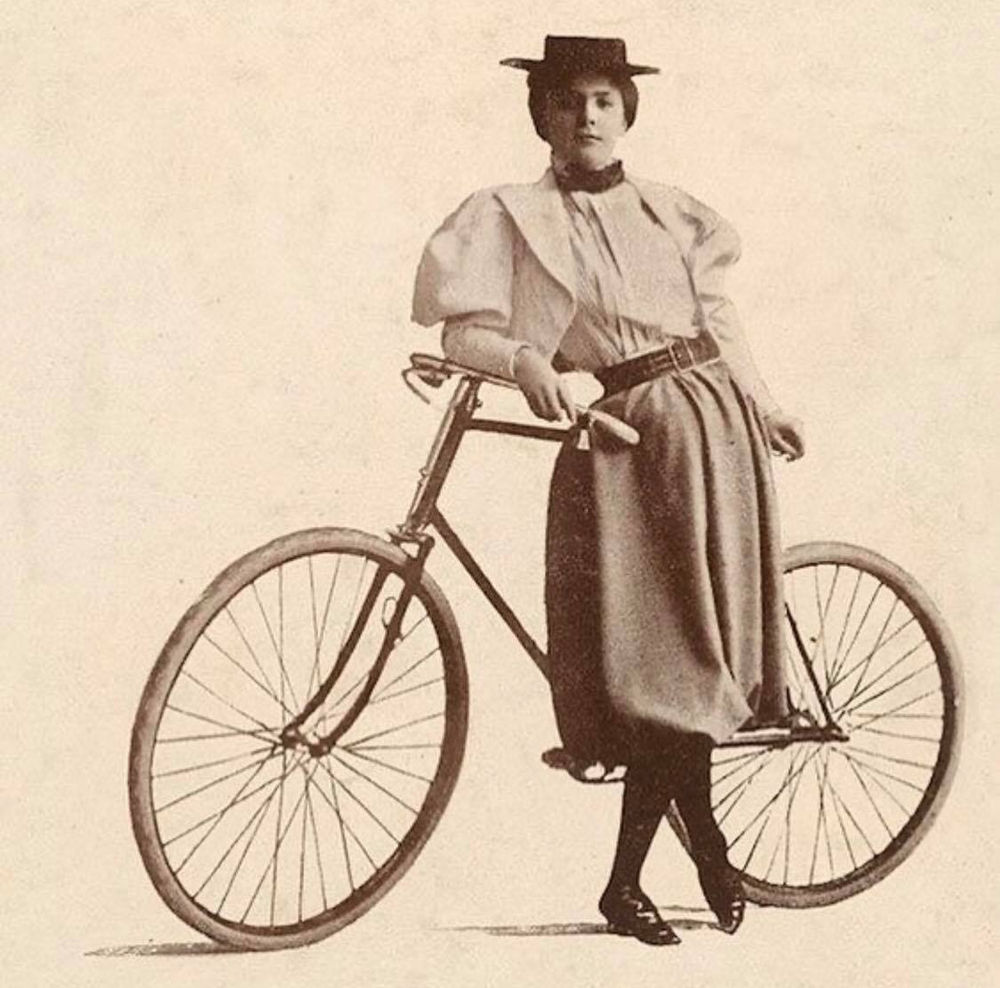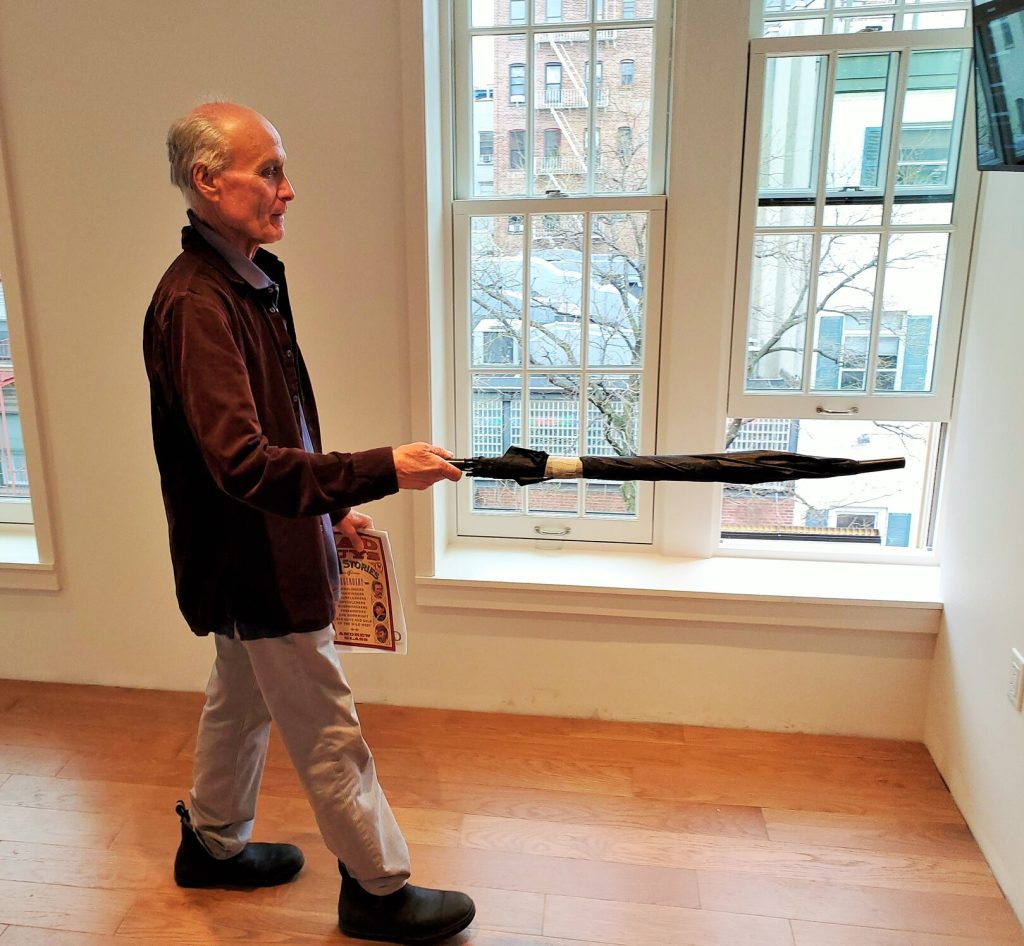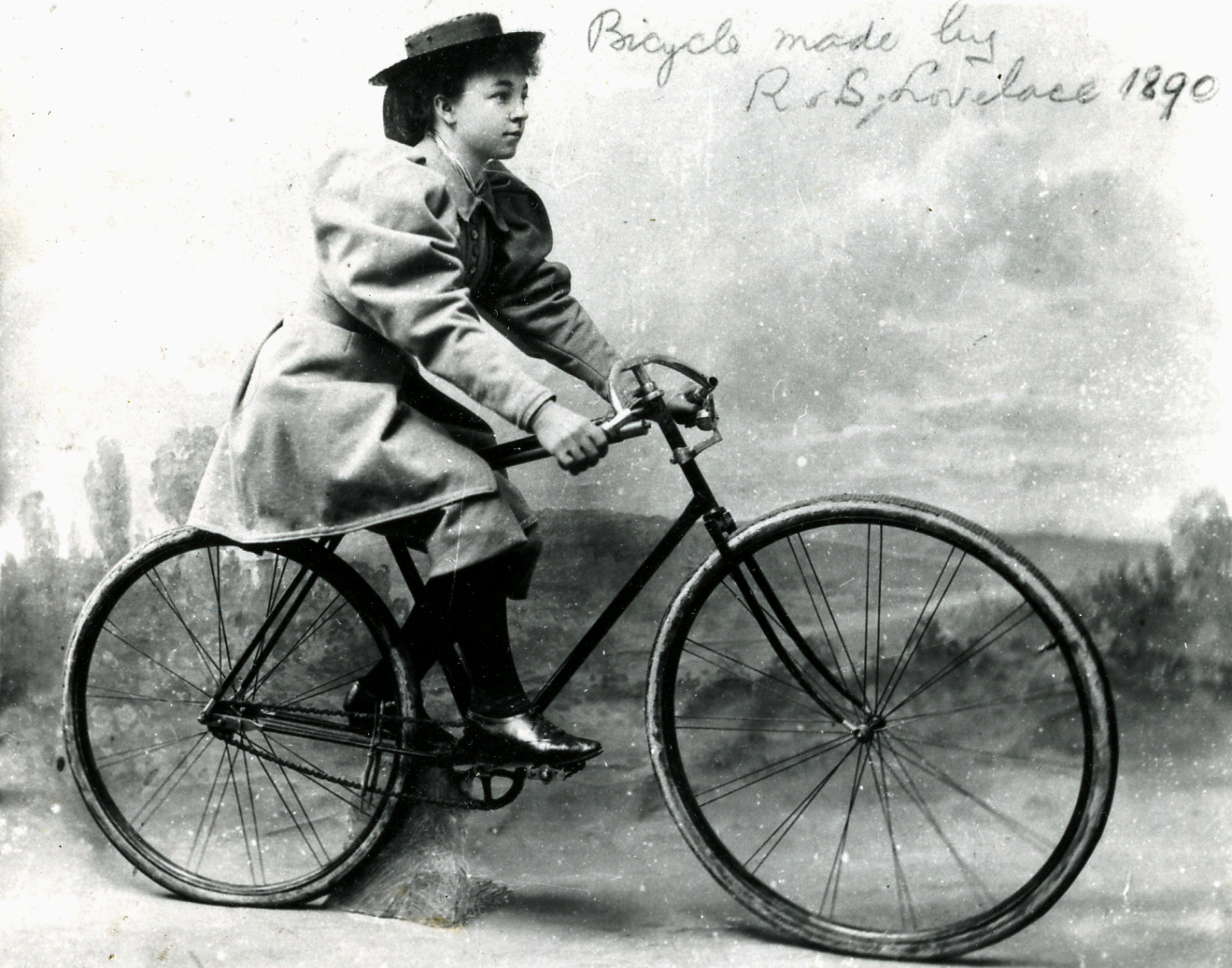In 1896, in the short piece “New York’s Bicycle Speedway,” the American writer Stephen Crane described the scene when Broadway was a pre-automobile paradise for the new bicycling fad. Cyclists back then still did have to look out for “trucks” — but they were lorries pulled by horses and driven by teamsters. Bloomers, inspired by Turkish-style pantaloons, were all the rage for women, especially cyclists, but Crane, among others, was not a fan of the fashion. The writer, 25, a smoker whose health was frail, was not a cycling advocate, either. He describes bicycle speedsters, known as “scorchers,” who defied police efforts to rein them in. In response, “Mulberry street” (police headquarters), launched a corps of knickers-clad bike cops who were fit and could actually catch the scorchers.
BY STEPHEN CRANE | The Bowery has had its day as a famous New York street. It is now a mere tradition. Broadway will long hold its place as the chief vein of the city’s life. No process of expansion can ever leave it abandoned to the cheap clothing dealers and dime museum robbers. It is too strategic in position. But lately the Western Boulevard which slants from the Columbus monument at the southwest corner of Central Park to the river has vaulted to a startling prominence and is now one of the sights of New York. This is caused by the bicycle. Once the Boulevard was a quiet avenue whose particular distinction were its shade trees and its third foot-walk which extended in Parisian fashion down the middle of the street. Also it was noted for its billboards and its huge and slumberous apartment hotels. Now, however, it is the great thoroughfare for bicycles. On these gorgeous spring days they appear in thousands. All mankind is a-wheel apparently and a person on nothing but legs feels like a strange animal. A mighty army of wheels streams from the brick wilderness below Central Park and speeds over the asphalt. In the cool of the evening it returns with swaying and flashing of myriad lamps.
The bicycle crowd has completely subjugated the street. The glittering wheels dominate it from end to end. The cafes and dining rooms of the apartment hotels are occupied mainly by people in bicycle clothes. Even the billboards have surrendered. They advertise wheels and lamps and tires and patent saddles with all the flaming vehemence of circus art. Even when they do condescend to still advertise a patent medicine, you are sure to confront a lithograph of a young person in bloomers who is saying in large type: “Yes, George, I find that Willowrum always refreshes me after these long rides.”
Down at the Circle where stands the patient Columbus, the stores are crowded with bicycle goods. There are innumerable repair shops. Everything is bicycle. In the afternoon the parade begins. The great discoverer, erect on his tall grey shaft, must feel his stone head whirl when the battalions come swinging and shining around the curve.

It is interesting to note the way in which the blasphemous and terrible truck-drivers of the lower part of the city will hunt a bicyclist. A truck-driver, of course, believes that a wheelman is a pest. The average man could not feel more annoyance if nature had suddenly invented some new kind of mosquito. And so the truck-driver resolves in his dreadful way to make life as troublous and thrilling for the wheelman as he possibly can. The wheelman suffers under a great handicap. He is struggling over the most uneven cobbles which bless the metropolis. Twenty horses threaten him and forty wheels miss his shoulder by an inch. In his ears there is a hideous din. It surrounds him, envelopes him.
Add to this trouble, then, a truckman with a fiend’s desire to see dead wheelmen. The situation affords deep excitement for everyone concerned.
But when a truck-driver comes to the Boulevard the beautiful balance of the universe is apparent. The teamster sits mute, motionless, casting sidelong glances at the wheels which spin by him. He still contrives to exhibit a sort of sombre defiance, but he has no oath or gesture nor wily scheme to drive a three-ton wagon over the prostrate body of some unhappy cyclist. On the Boulevard this roaring lion from down town is so subdued, so isolated that he brings tears to the sympathetic eye.

There is a new game on the Boulevard. It is the game of Bicycle Cop and Scorcher. When the scorcher scorches beyond the patience of the law, the bicycle policeman, if in sight, takes after him. Usually the scorcher has a blissful confidence in his ability to scorch and thinks it much easier to just ride away from the policeman than to go to court and pay a fine. So they go flying up the Boulevard with the whole mob of wheelmen and wheelwomen, eager to see the race, sweeping after them. But the bicycle police are mighty hard riders and it takes a flier to escape them. The affair usually ends in calamity for the scorcher, but in the meantime fifty or sixty cyclists have had a period of delirious joy.
Bicycle Cop and Scorcher is a good game, but after all it is not as good as the game that was played in the old days when the suggestion of a corps of bicycle police in neat knickerbockers would have scandalized Mulberry street. This was the game of Fat Policeman on Foot Trying to Stop a Spurt. A huge, unwieldy officer rushing out into the street and wildly trying to head off and grab some rider who was spinning along in just one silver flash was a sight that caused the populace to turn out in a body. If some madman started at a fierce gait from the Columbus monument, he could have the consciousness that at frequent and exciting intervals, red-faced policemen would gallop out at him and frenziedly clutch at his coattails. And owing to a curious dispensation, the majority of the policemen along the Boulevard were very stout and could swear most graphically in from two to five languages.
But they changed all that. The un-police-like bicycle police are wonderfully clever and the vivid excitement of other days is gone. Even the scorcher seems to feel depressed and narrowly looks over the nearest officer before he starts on his frantic career.
The girl in bloomers is, of course, upon her native heath when she steers her steel steed onto the Boulevard. One becomes conscious of a bewildering variety in bloomers. There are some that fit and some that do not fit. There are some that were not made to fit and there are some that couldn’t fit anyhow. As a matter of fact the bloomer costume is now in one of the primary stages of its evolution. Let us hope so at any rate. Of course every decent citizen concedes that women shall wear what they please and it is supposed that he covenants with himself not to grin and nudge his neighbor when anything particularly amazing passes him on the street but resolves to simply and industriously mind his own affairs. Still the situation no doubt harrows him greatly. No man was ever found to defend bloomers. His farthest statement, as an individual, is to advocate them for all women he does not know and cares nothing about. Most women become radical enough to say: “Why shouldn’t I wear ’em, if I choose.” Still, a second look at the Boulevard convinces one that the world is slowly, solemnly and inevitably coming to bloomers. We are about to enter an age of bloomers and the bicycle, that machine which has gained an economic position of the most tremendous importance, is going to be responsible for more than the bruises on the departed fat policemen of the Boulevard.


Unclear why “Mulberry street” referred to police headquarters, which was two blocks to the west on Centre St. before its current 1 Police Plaza location. No?
https://www.boweryboyshistory.com/2011/07/legendary-police-headquarters-at-300.html
Nice